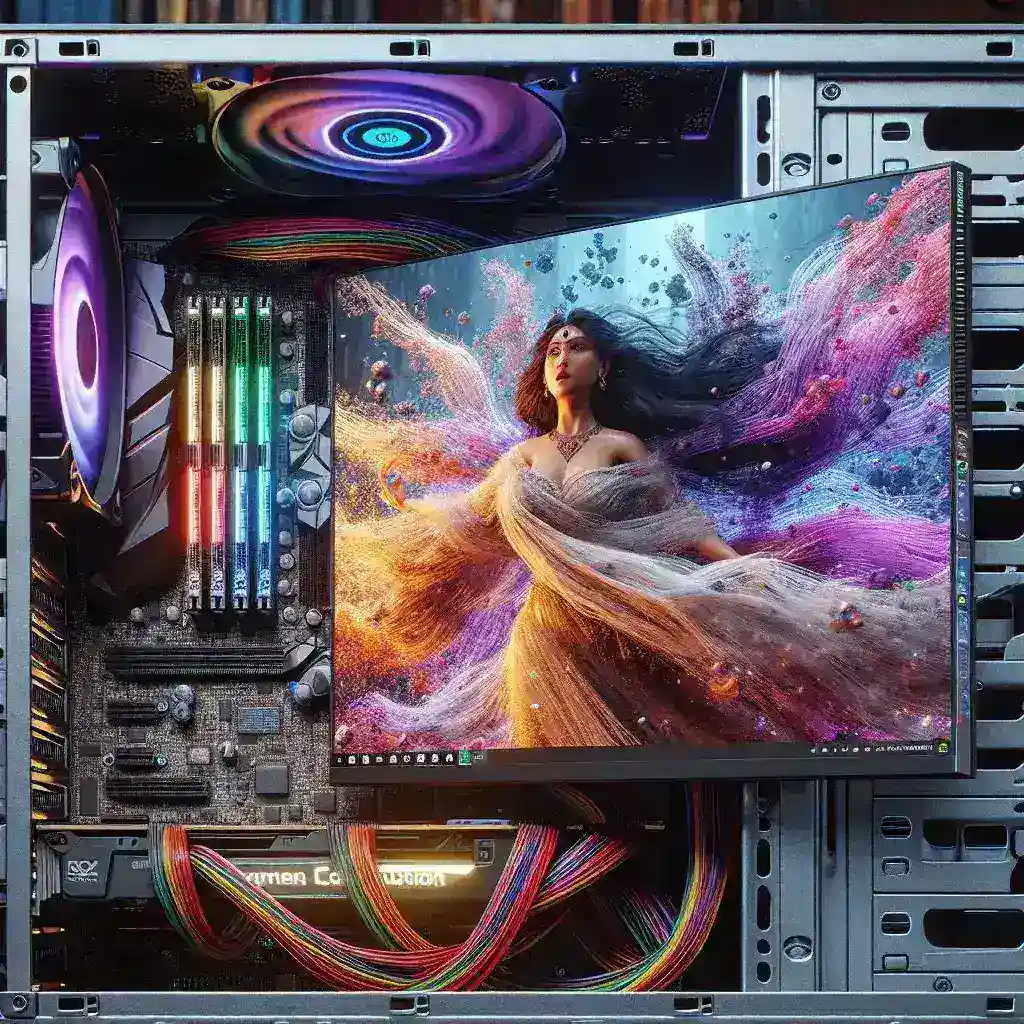Advancements in gaming technology have brought about a significant transformation in the visual appeal and realism of video games. Among these advancements, real-time cloth and hair simulations stand out as particularly intricate and computationally demanding. This article delves into how gaming PCs manage these complex tasks, examining the technologies, software, and hardware that enable lifelike fabric and hair movement in modern games.
Core Principles of Real-Time Simulations
Real-time cloth and hair simulations mimic the physical behavior of fabric and hair to enhance visual realism. These simulations require sophisticated algorithms to calculate movement, collisions, and environmental effects dynamically. Here are the core principles:
- Physics-Based Modeling: Utilizing mathematical models to simulate physical properties like elasticity, stiffness, and damping.
- Collision Detection: Ensuring that cloth and hair interact correctly with characters, objects, and environments.
- Wind and Environmental Effects: Adding natural environmental influences to enhance authenticity.
Technological Evolution in Simulations
Technological advancements have pushed the boundaries of what is possible in real-time simulations. Here’s an overview of the evolution:
| Era | Technological Advancements |
|---|---|
| Pre-2010 | Basic rigid-body dynamics, simple cloth physics. |
| 2010-2015 | Introduction of real-time physics engines like NVIDIA PhysX. |
| 2015-2020 | Improved GPU frameworks, sophisticated algorithms for cloth and hair physics. |
| 2020-Present | Integration of AI, machine learning, and real-time ray tracing for enhanced realism. |
Key Components of Gaming PCs
Handling real-time cloth and hair simulations requires a well-rounded and powerful gaming PC. The following components are crucial:
Graphics Processing Unit (GPU)
The GPU plays a pivotal role in rendering real-time simulations. Modern GPUs, like those from NVIDIA and AMD, include dedicated frameworks for physics calculations, such as NVIDIA’s PhysX and AMD’s TressFX.
Central Processing Unit (CPU)
The CPU handles the initial computational load before offloading tasks to the GPU. High-performance CPUs ensure seamless processing of complex algorithms required for realistic simulations.
RAM (Random Access Memory)
A higher RAM capacity enables smoother operations, especially when dealing with intensive simulations. 16GB to 32GB is recommended for high-end gaming PCs.
Software and Frameworks
Several software and frameworks assist in achieving realistic cloth and hair simulations. Popular choices include:
- NVIDIA PhysX: A physics engine that provides real-time physical simulations, including fluids, cloth, and hair.
- AMD TressFX: A framework specifically designed for realistic hair rendering using advanced algorithms.
- Havok Physics: A middleware software that offers a range of physics simulations, widely used in game development.
Challenges and Solutions
Despite advancements, achieving realistic real-time simulations poses challenges:
Processing Power
Real-time simulations are computationally expensive, requiring continuous advancements in GPU and CPU capabilities. Balancing processing power while maintaining frame rates is a persistent challenge.
Memory Management
Efficient memory management is essential to prevent lags and crashes. Techniques like level of detail (LOD) and occlusion culling help optimize memory usage.
Algorithm Complexity
Developing algorithms that can perform real-time calculations without compromising accuracy and performance is an ongoing research area.
Future Prospects
The future of real-time cloth and hair simulations is promising, with ongoing research and technological advancements. Future innovations include:
- AI and Machine Learning: Using AI to predict and simulate complex movements more efficiently.
- Quantum Computing: Potentially revolutionizing processing capabilities, allowing unprecedented simulation detail.
- Improved Physics Engines: Continuous development and integration of more sophisticated physics engines.
In conclusion, gaming PCs are marvels of modern technology, equipped with the necessary hardware and software to handle real-time cloth and hair simulations. As technology progresses, these simulations will become even more lifelike, pushing the boundaries of what is possible in the gaming world.

